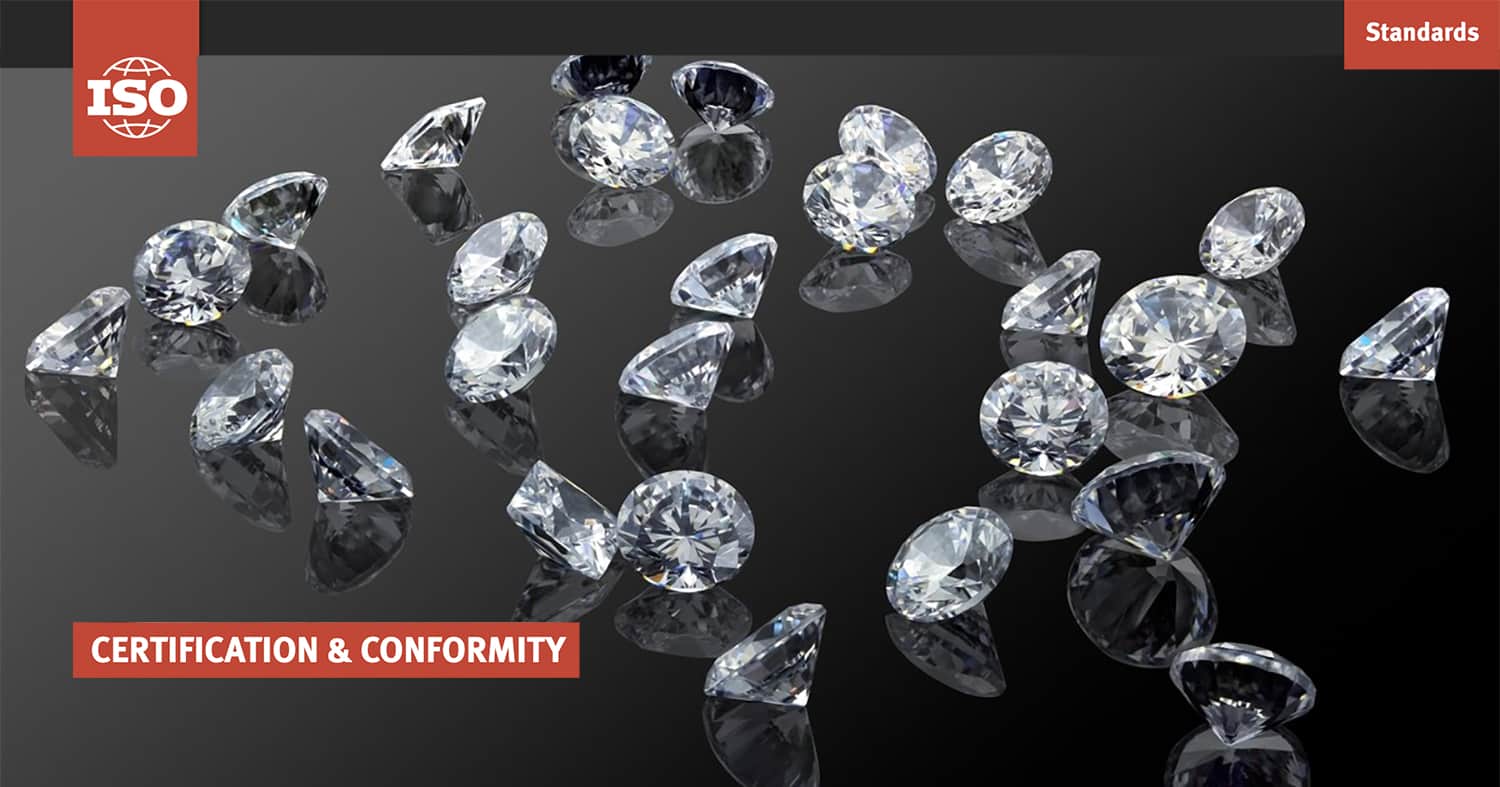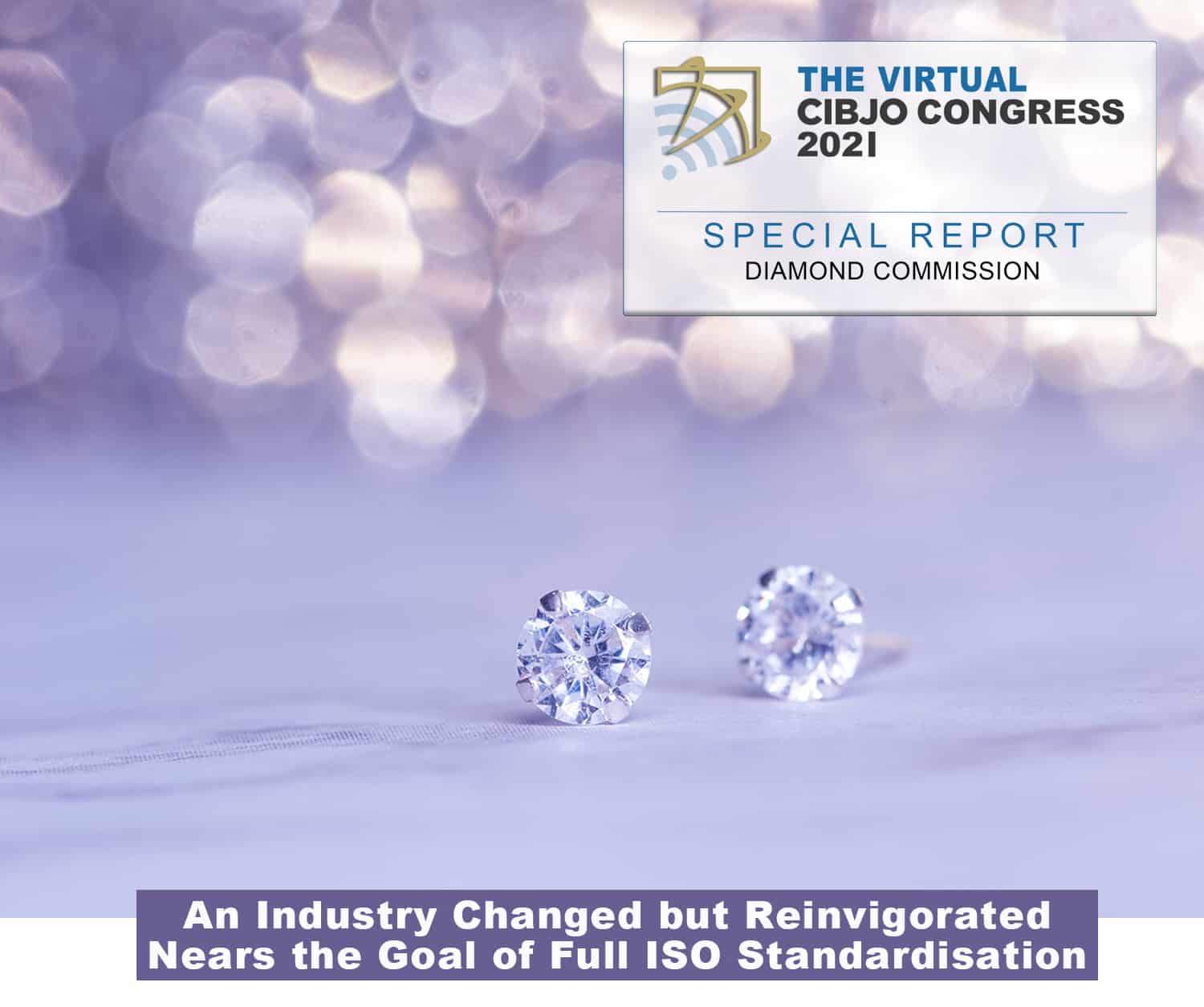Blog
Home » Diamonds blog » WITH TWO STANDARDS PUBLISHED AND A THIRD IN THE WORKS, DIAMONDS TO BECOME FIRST GEMSTONE CATEGORY COVERED BY ISO
Focus on

This is not the case in the jewelry business. While the risk to life and limb is considerably reduced when compared to drugs, for example, the financial consequences are high, especially when it comes to the noble metals; top-of-the-line colored gemstones like rubies, emerald and sapphires; pearls; and, of course, diamonds.
There are few national standards when it comes to jewelry, and even fewer international standards. What exists has often been developed haphazardly, most typically by gem labs, sometimes private companies or simply by individuals. And what is considered acceptable in one country is not necessarily permitted in another.
But for the past six years a process has been underway in the diamond sector, by which sets of clearly defined standards are being recognized by the single most authoritative body in world, the International Organization for Standardization (ISO).
Although it is an independent, non-governmental international organization, the Geneva-based ISO-based has affiliated to it 165 national standards bodies. It operates 333 Technical Committees covering 253 sectors, among them food and agriculture, energy, health, mechanical engineering, communications, and jewellery and precious metals. More than 23,000 ISO standards have been issued.
INITIAL BREAKTHROUGH MADE IN 2015
The industry organization lobbying hardest for an ISO diamond standard was CIBJO, the World Jewellery Confederation. For decades, in the absence of official consensus on industry nomenclature and benchmarks, it has produced the Blue Books, sets of industry standards and nomenclature for diamonds, colored gemstones, pearls, coral and precious metals. They are compiled and are consistently updated by the relevant CIBJO Commissions, whose members include representatives of trade organisations and laboratories active in the diamond, coloured gemstone, pearl, precious metals and jewellery industries.
In the almost complete absence of jewellery industry standards endorsed internationally, the CIBJO Blue Books became the most widely accepted set of globally accepted standards. In November 2004 the CIBJO Blue Book was relied upon by a panel of three judges in a district court in Munich, Germany, which issued a restraining order to the German distributor of gem-quality synthetic diamonds, to cease using the term “cultured diamonds” when marketing its products to the public. Legal commentators have suggested that since the ruling has taken place within the jurisdiction of a member country of the European Union, the verdict most probably has legal authority in other EU countries.

CIBJO’s 2021 Diamond Commission Special Report, released in September, which outlines the effort towards the establishment of a full set of ISO standards for diamonds.
In July 2015, ISO published its first International Standard for the diamond industry. Registered as International Standard 18323 and entitled “Jewelry — Consumer confidence in the diamond industry,” It specified a set of permitted descriptors for the diamond industry that are meant to be unequivocally understood by consumers.
Importantly, it defined a diamond as having been “created by nature” and further noted that “the denomination ‘diamond’ without further specification always implies ‘natural diamond.’”
Cited as the primary sources International Standard 18323 in the ISO International Standard’s bibliography were CIBJO’s Diamond Blue Book; the IDC Rules, which are aligned with CIBJO’s and today fall under its banner; PAS (Publicly Available Specification) 1048, which is based on the CIBJO Diamond Blue Book and relates to terminology and classification of grading polished diamonds that were developed by CIBJO with the support of the German Standards Institute (DIN).

The ISO headquarters in Geneva, Switzerland.
DIAMOND GRADING STANDARDS
As the President of CIBJO’s Diamond Commission recounts a just released special report, the second ISO milestone was registered in September 2020, when the body published International Standard 24016, specifying the terminology, classification and the methods to be used for the grading and description of single unmounted polished diamonds over 0.25 carats in weight.
The process of developing the new standard for diamond grading began two years earlier at the request of Schweizerische Normen-Vereinigung (SNV), the Swiss Association for Standardization. CIBJO then granted ISO permission to use PAS 1048, as a basis for drafting the new ISO standard.
That leaves diamonds of 0.25 carats lower out of the loop, but work currently is underway on the still-to-be-approved International Standard 6893. As Sheintal explains, it is a project with significant technical challenges. For although the quality of a small diamond is defined like larger diamonds, by the 4Cs, namely caratage, color, clarity and its cut, smaller diamonds are often sold in homogenous batches, and quality by sampling is considered acceptable.
“When International Standard 6893 is eventually published by ISO, a complete set of standards for the diamond industry will have been achieved, a truly historic achievement,” Sheintal writes. “But since standards are enforced at the country level, the most desirable consequence would be that these international standards would be used to create equivalent national standards.”
